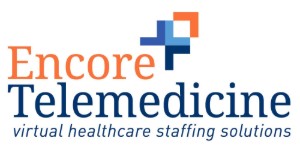Notable Barriers to Telehealth Implementation
With technology continuing to evolve in so many different ways, it is inevitable that it would affect the health care industry as well. Much of this innovation is positive as it opens up access between patients and medical providers in ways never before dreamed possible. At the same time, there are some unique challenges to implementing mobile technology in the medical sector. These challenges cannot just be discounted and dealt with overnight, as there are many issues that must be factored in the equation before moving forward. Here are some of the more notable barriers to telehealth implementation.
The Money Factor: One of the Top Telehealth Barriers
With health care, it seems that everything revolves around money. Some medical providers are reluctant to use telemedicine because it is difficult to receive reimbursement from services provided through the technology. Since nearly 100 million people in America are currently a part of some type of managed care system, this has proven to be a major barrier to the widespread implementation of telehealth applications.[1] For example, Medicare reimburses very little for service. That which is reimbursed is mostly confined to rural locations and a select few procedural terminology codes.
Many of these restrictions are currently in place out of fear that health care providers would abuse the system if telehealth applications were reimbursed on a broader scale. This would lead to a situation of over-utilization, and that could end up driving up expenses even more than they are today. Beyond this, many technology-based companies that are not adequately informed about the unique nature of the health care industry are getting involved in the development of telehealth applications. They are doing so because they see the potential for big profit opportunities down the road. This is resulting in many applications being produced by entities that have limited to no knowledge of how to correctly apply telemedicine to health care-related needs.
Regulatory Considerations
There are some regulatory considerations when talking about telehealth. Many of the applications are designed to operate within one particular state, but as the practice has expanded and more heath care providers have jumped on the technology bandwagon, interstate applications have to be considered. As America does not yet operate on a national system when it comes to health care, licensing individual telehealth applications has become a bit problematic to say the least. There are also regulatory constraints to consider in this area, such as the reality that the Social Security Act specifically limits the use of telemedicine to certain providers.[2] All of these factors have combined to cause quite a headache for individuals involved in the creation and widespread marketing to telehealth applications.
Limitations of Technology Causing Telehealth Barriers
While technology is certainly advancing in the field of medicine, it is important to remember that not all applications can deliver the service-oriented component that hospitals and clinics are designed to deliver. There are limitations in this area that must be considered moving forward. While many applications have made life easier for millions of patients, even the best-designed application cannot overcome certain barriers.[3]
Telehealth is a field that will continue to evolve right alongside technology. There are limitations that need to be dealt with, but the applications currently in development are solid and provide benefits to the public.
If you are interested in discussing how a telemedicine doctor network can help your healthcare organization, please click below.
References:
1. https://www.nap.edu/read/13466/chapter/5#18
2. https://www.ncbi.nlm.nih.gov/pmc/articles/PMC3881125/
3. http://www.cchpca.org/sites/default/files/resources/Telehealth%20Policy%20Barriers%20Fact%20Sheet%20FINAL_0.pdf

